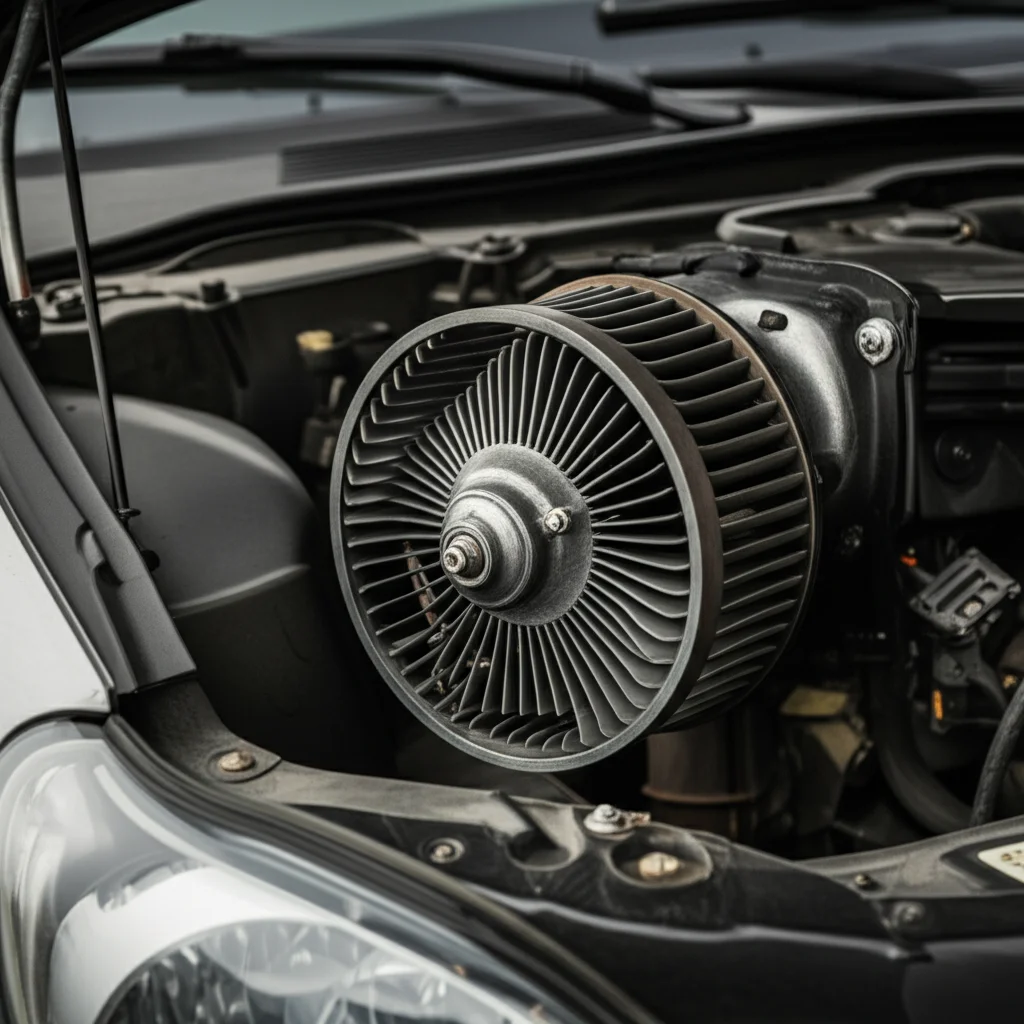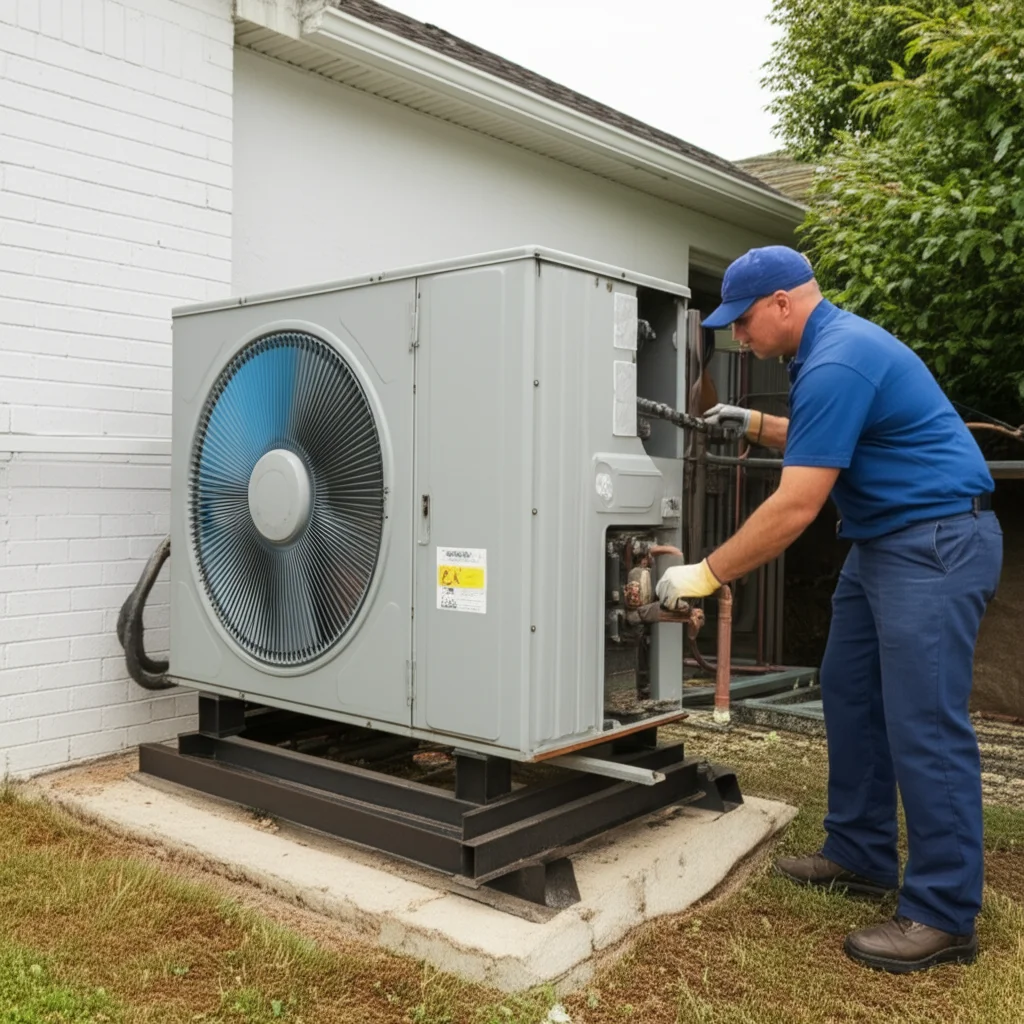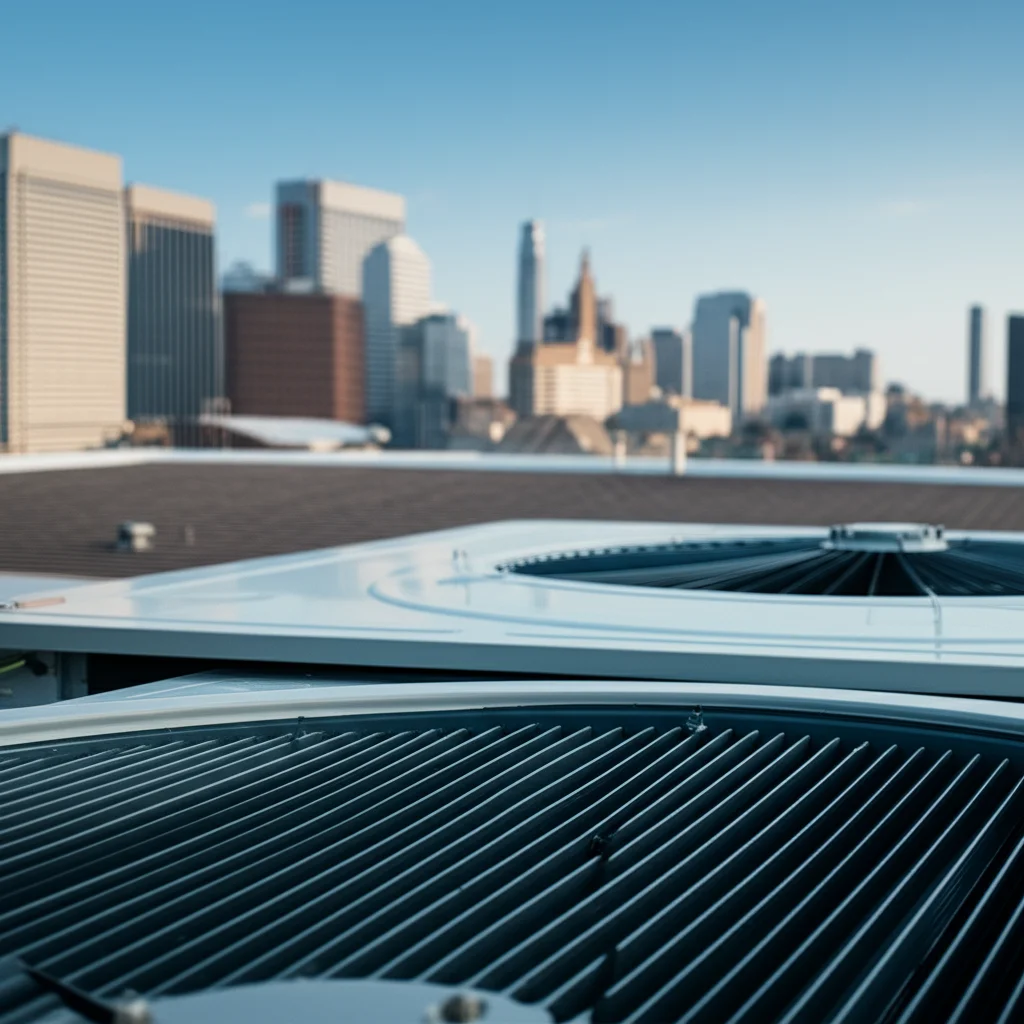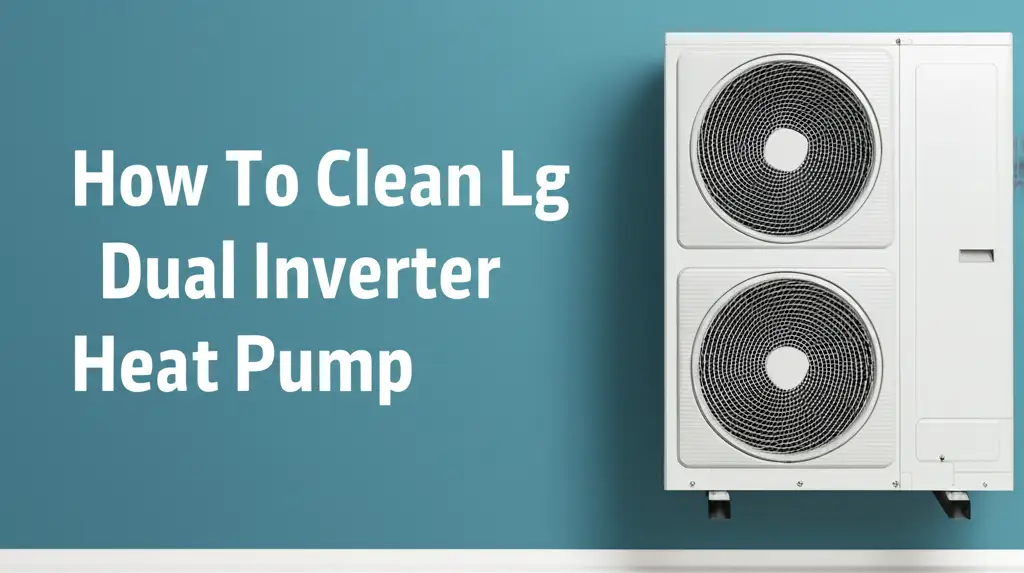· Todd Martin · Home Maintenance · 20 min read
How To Clean Blower Motor

Revitalize Your Air: How to Clean a Blower Motor Effectively
Have you noticed your furnace or air conditioner isn’t working as well as it used to? Perhaps the airflow feels weak, or you hear unusual noises. The unsung hero behind your home’s consistent comfort is often the blower motor, quietly pushing conditioned air throughout your living spaces. Over time, this vital component can accumulate dust, dirt, and debris, significantly reducing its efficiency and affecting your indoor air quality.
Learning how to clean a blower motor is a smart investment in your home’s health and your HVAC system’s longevity. A neglected blower motor works harder, consumes more energy, and can even shorten the lifespan of your entire unit. In this comprehensive guide, I will walk you through the process of cleaning your blower motor safely and effectively. We will cover everything from identifying common issues to the tools you need and a step-by-step cleaning procedure. Get ready to breathe easier and enjoy a more efficient home environment.
Takeaway
Keeping your blower motor clean is essential for efficient HVAC operation and healthy indoor air.
- Regular cleaning prevents energy waste and expensive repairs.
- Safety first: always disconnect power before starting.
- Gather the right tools for a thorough and safe clean.
- Follow a step-by-step process for effective dirt removal.
- Consider professional help for complex issues or if unsure.
To clean a blower motor, first, cut power to your HVAC unit at the thermostat and breaker. Access the blower compartment, typically in the furnace or air handler. Carefully remove the motor and its fan (squirrel cage). Use a soft brush, vacuum, and mild degreaser to remove accumulated dust and debris from the motor casing and fan blades. Reassemble only after all parts are dry.
Why a Clean Blower Motor is Crucial for Your Home’s Air
Your home’s heating and cooling system relies heavily on the blower motor. This motor powers the fan that distributes air through your ductwork. It ensures that the warm air from your furnace or cool air from your air conditioner reaches every room. Think of it as the heart of your HVAC system, constantly circulating air to maintain your desired temperature.
Over time, this motor and its attached fan, often called a squirrel cage, collect a significant amount of dust, pet hair, and other airborne particles. This buildup is a natural consequence of air filtration and circulation. Even with a good air filter, some fine particles will bypass it and settle on the blower components. The dirt creates a layer that obstructs airflow and forces the motor to work harder. A dirty motor struggles to move air efficiently.
This reduced efficiency leads to several problems. First, your energy bills can climb. The motor draws more power to compensate for the restricted airflow. This means you pay more for the same level of comfort. Second, the lifespan of your HVAC system can decrease. The increased strain on the motor causes it to overheat and wear out faster. Replacing a blower motor is an expensive repair.
Furthermore, a dirty blower motor directly affects your indoor air quality. The accumulated dust, mold spores, and allergens on the fan blades can be recirculated into your home. This can trigger allergies or respiratory issues for sensitive individuals. A clean blower motor promotes healthier breathing conditions. It also ensures your HVAC system performs at its peak, providing consistent comfort and helping your filters work more effectively. Regular cleaning is a simple maintenance task that yields significant benefits.
Spotting the Signs: Is Your Blower Motor Calling for a Clean?
Before you embark on cleaning your blower motor, it helps to know if it even needs attention. Your HVAC system often gives subtle hints when its blower motor is struggling with dirt and grime. Paying attention to these signs can save you from bigger problems down the road. These indicators suggest that airflow is restricted or the motor is under strain.
One of the most common signs is reduced airflow from your vents. If you notice that air coming out of your registers feels weak, or if some rooms are significantly colder or hotter than others, a dirty blower motor might be the culprit. The accumulated dust on the fan blades acts like a barrier, preventing the fan from moving air effectively. This directly impacts your home’s comfort levels.
Another clear sign is an increase in your energy bills without a corresponding change in usage. As mentioned earlier, a dirty blower motor has to work much harder to push air. This extra effort translates directly into higher electricity consumption. Your system is constantly trying to reach the thermostat setting, but it cannot due to the obstruction. This leads to longer run times and more energy used.
Unusual noises emanating from your HVAC unit are also strong indicators. A clean blower motor runs relatively quietly. If you start hearing rattling, squealing, or humming sounds, it could be the motor struggling. Dirt buildup can imbalance the fan blades, causing vibrations or stressing the motor bearings. Sometimes, the dirt itself can rub against the housing, creating noise. Cleaning a mini split blower wheel without removing it can address similar noise issues in smaller units.
Finally, visible dust accumulation around your vents or on the outdoor unit’s coil suggests a broader dust problem within your system. If you see excessive dust on the components of your outdoor unit, it is highly likely that the indoor blower motor and fan are also heavily caked with grime. Additionally, a persistent musty or burning smell when your system runs could indicate mold growth on the blower wheel or overheating of the motor due to excessive dirt. Address these signs promptly to prevent further damage and ensure optimal performance.
Essential Safety Steps Before Cleaning Your Blower Motor
Working with any electrical appliance, especially one as powerful as an HVAC unit, demands strict adherence to safety protocols. Before you even think about grabbing a screwdriver, ensuring your safety is paramount. Ignoring these steps can lead to serious injury or damage to your system. I cannot stress enough the importance of cutting off power completely.
The first and most critical step is to disconnect all power to your HVAC system. Simply turning off the thermostat is not enough. You must locate the dedicated circuit breaker for your furnace or air handler in your home’s main electrical panel. Flip the breaker switch to the “OFF” position. For added safety, consider putting a piece of tape over the switch or a “Do Not Operate” sign to prevent anyone from accidentally turning it back on while you are working. This eliminates the risk of electrical shock and the motor suddenly starting up.
Next, wear appropriate personal protective equipment (PPE). A dirty blower motor can release a significant amount of dust, dirt, and potentially mold spores into the air when disturbed. Wearing a dust mask or respirator is crucial to protect your lungs from inhaling these particles. Safety glasses will shield your eyes from debris that might dislodge during cleaning. Additionally, sturdy work gloves can protect your hands from sharp edges of metal components or the fan blades.
Ensure the area where you are working is well-ventilated. Opening windows and doors can help dissipate dust and fumes from cleaning solutions. If possible, set up a fan to direct airflow away from your face. This also helps with visibility and breathing comfort during the process. Having good lighting is also important, as the blower compartment can be dark and cramped. A flashlight or headlamp will illuminate the area, allowing you to see dirt more clearly and work more safely.
Finally, always work on a dry surface. Avoid standing in water or on damp ground when dealing with electrical components. If your furnace or air handler is in a basement prone to moisture, ensure the area is dry before you begin. Taking these fundamental safety precautions ensures that your blower motor cleaning project is safe and successful.
Gathering Your Gear: Tools for a Successful Blower Motor Cleaning
You need the right tools to tackle a dirty blower motor effectively. Having everything prepared beforehand streamlines the cleaning process. It also prevents multiple trips to the garage or store in the middle of the job. Most of these items are common household tools or easily acquired from a hardware store.
First, you will need a set of screwdrivers, typically Phillips and flathead, to remove access panels and motor mounting screws. An adjustable wrench or a socket set might also be necessary for loosening nuts and bolts securing the blower housing or motor. Every HVAC unit is different, so it’s good to have a variety of sizes on hand. A sturdy flashlight or headlamp is crucial for illuminating the often-dark blower compartment. You need to see clearly to identify fasteners and the extent of the dirt buildup.
For the actual cleaning, a heavy-duty shop vacuum with a hose attachment is indispensable. This will allow you to suction away loose dust and debris from the motor and surrounding compartment. A stiff-bristled brush, like a utility brush or a dedicated HVAC cleaning brush, is perfect for dislodging stubborn grime from the fan blades. Some people also use a toothbrush for hard-to-reach crevices. You can also use compressed air, but be cautious with its use. Compressed air can push dust deeper into motor windings if not used correctly.
You will also need a degreasing cleaner. A commercial coil cleaner or a mild degreaser designed for HVAC components works well. You can also make a simple solution of dish soap and warm water for light grime. For stubborn tar-like buildup, a specialized non-solvent-based cleaner is best. Always check the cleaner’s label for compatibility with plastic and metal components. Have a few clean rags or old towels on hand for wiping down surfaces and applying the cleaner.
Lastly, a bucket or plastic sheet placed under the unit can catch any falling debris or drips from the cleaning solution. This helps keep your workspace tidy. Remember your personal protective equipment: safety glasses, a dust mask or respirator, and work gloves. These tools, combined with proper safety measures, will equip you for a thorough and efficient blower motor cleaning.
Your Guide to Deep Cleaning a Blower Motor: Step-by-Step
Cleaning a blower motor can seem daunting, but breaking it down into manageable steps makes the process straightforward. I recommend setting aside a few hours, especially for your first time, to ensure you can work without rushing. This detailed guide will help you clean your blower motor effectively.
Locating and Accessing the Blower Motor
Before anything else, ensure the power to your HVAC unit is completely off at both the thermostat and the circuit breaker. Confirm it is off by trying to turn the system on. Locate your furnace or air handler. The blower motor is typically housed in the lower section of the indoor unit. You will usually find an access panel secured by screws or latches. Use your screwdriver or wrench to remove these fasteners carefully. Once the panel is off, you should see the large, circular fan unit, often called a squirrel cage, connected to the blower motor. Take a moment to observe how the wires are connected to the motor. It can be helpful to take a picture with your phone before disconnecting anything. This serves as a reference for reassembly.
Removing the Blower Assembly
The entire blower assembly, including the motor and the fan, usually slides out. First, you may need to disconnect any electrical wires leading to the motor. Note the color coding or label them if necessary. Some units have a quick-disconnect plug. There may also be a small ground wire. Next, identify the bolts or screws that secure the entire blower housing in place. Loosen and remove these. Gently slide the entire assembly out of the furnace cabinet. It might be heavy, so be prepared to support its weight. Place it on a clean, protected surface like a tarp or old towels. For some systems, you might be able to clean the AC blower wheel without removing it, but for a thorough blower motor clean, removal is often best.
Disassembling the Blower Motor from the Fan
Once the blower assembly is out, you need to separate the motor from the squirrel cage fan. The fan is typically attached to the motor shaft with a set screw. Locate this set screw on the hub of the squirrel cage. Use an Allen wrench or a small socket wrench to loosen it. Do not remove it completely, just loosen it enough for the fan to slide off the shaft. Once loosened, gently pull the squirrel cage fan off the motor shaft. Sometimes, corrosion can make this difficult. A little penetrating oil or gentle tapping might help. Handle the fan carefully; the blades can be delicate. Once separated, you can clean both components more easily.
Cleaning the Components
Now for the actual cleaning. Start with the squirrel cage fan. Use your shop vacuum with a brush attachment to remove all loose dust and debris from the fan blades and housing. Be thorough. For stubborn, caked-on dirt, use a stiff-bristled brush to dislodge it. You can also use a mild degreasing cleaner. Spray the cleaner onto the blades and let it sit for a few minutes to break down the grime. Then, use your brush to scrub away the softened dirt. For very tough spots, you might need a stronger, non-solvent-based HVAC coil cleaner. Rinse the fan thoroughly with water if you use a cleaner, making sure no residue remains. If you are cleaning a specific type of unit, like a mini-split, remember that cleaning the mini-split blower wheel without removing it might be an option, but for central HVAC, removal for deep cleaning is ideal.
For the blower motor itself, focus on cleaning the exterior casing. Use a vacuum to remove dust. Do not spray any liquids directly onto the motor windings or electrical components. If the motor has vent openings, carefully use compressed air to blow out dust from the inside, but only from the outside in to avoid pushing dust deeper. Wipe down the motor casing with a damp cloth. Check the motor bearings for signs of wear or excessive dirt. Some older motors have lubrication ports; if yours does, apply a few drops of motor oil specifically designed for electric motors. Most modern motors are sealed and do not require lubrication.
Reassembly and Testing
Before reassembly, ensure all components, especially the squirrel cage fan, are completely dry. Moisture can cause rust or electrical issues. Slide the squirrel cage back onto the motor shaft, aligning the set screw with any flat spots on the shaft if present. Tighten the set screw firmly, but do not overtighten it, as this can strip the screw or damage the shaft. Ensure the fan is securely mounted and spins freely without wobbling.
Carefully slide the entire blower assembly back into the furnace cabinet, aligning it with its mounting points. Reattach any screws or bolts that secure the housing. Reconnect all electrical wires to the motor, referring to your pictures or labels. Replace the access panel and secure it with its screws or latches. Once everything is back in place, restore power to your HVAC unit at the circuit breaker. Turn your thermostat to fan mode or set it to run heating or cooling. Listen for any unusual noises and feel the airflow from your vents. You should notice a stronger, quieter airflow and feel confident in your accomplishment.
DIY vs. Pro: When to Seek Expert Blower Motor Cleaning
Deciding whether to clean your blower motor yourself or hire a professional depends on several factors. While DIY cleaning can save money and provide a sense of accomplishment, there are situations where professional expertise is invaluable. Understanding the pros and cons of each approach helps you make the best decision for your home and HVAC system.
DIY cleaning is a great option if you are comfortable working with tools and have a basic understanding of your HVAC system. It is also suitable for routine maintenance, where the motor has a light to moderate dust buildup. The cost savings are a major benefit. You only pay for cleaning supplies, which are minimal compared to a professional service fee. Doing it yourself also allows you to perform the cleaning on your schedule, which can be convenient. I find that learning these tasks gives me a better understanding of how my home systems work.
However, DIY cleaning has its limitations. The process requires careful disassembly and reassembly, which can be challenging for those unfamiliar with HVAC components. There is also a risk of damaging delicate parts if you are not careful. For instance, breaking a fan blade or miswiring the motor can lead to expensive repairs. Furthermore, reaching all parts of the blower motor and housing can be difficult in tight spaces. You might not have access to specialized tools or cleaning solutions that professionals use.
Professional cleaning, on the other hand, offers several advantages. HVAC technicians have specialized training, tools, and experience. They can quickly identify the type of motor, its specific components, and the best way to clean it without causing damage. Professionals can also access hard-to-reach areas and use industrial-strength cleaners for heavy grime or mold. They can also perform a comprehensive inspection of your entire HVAC system, identifying other potential issues beyond just the blower motor. This comprehensive service can prevent future breakdowns and optimize system performance.
You should consider calling a professional if:
- You are unsure about any step of the process.
- The motor is extremely dirty, possibly with heavy grease, tar, or mold growth.
- You encounter difficulty removing the blower assembly or separating components.
- The unit is old, and parts are fragile.
- You hear persistent grinding or unusual noises after a basic cleaning, suggesting internal motor issues.
- You lack the necessary tools or physical capability to perform the task safely.
Investing in professional cleaning can provide peace of mind and ensure your system runs efficiently and safely. It may prevent more costly repairs in the long run.
Keeping It Clean: Long-Term Maintenance for Your Blower Motor
Cleaning your blower motor is a significant step towards better HVAC efficiency and indoor air quality. However, it is not a one-time fix. Regular maintenance practices help keep your blower motor clean and extend the life of your entire system. Implementing these simple habits can prevent excessive dirt buildup and ensure continuous optimal performance.
The most critical maintenance task is regularly replacing your HVAC air filter. The air filter is your system’s first line of defense against dust, dirt, and allergens. A clean filter captures more particles, preventing them from reaching the blower motor and other internal components. Check your filter every month and replace it at least every 1-3 months, depending on your household’s activity, pet ownership, and local air quality. A clogged filter restricts airflow, making the blower motor work harder and increasing energy consumption, even if the motor itself is clean.
Consider upgrading to a higher-efficiency air filter if your system can accommodate it. Filters with a higher MERV (Minimum Efficiency Reporting Value) rating capture smaller particles. This further protects your blower motor and improves indoor air quality. However, ensure your HVAC system is designed to handle higher MERV filters, as some systems may struggle with the increased airflow resistance. Consult your system’s manual or an HVAC professional if you are unsure.
Keeping your home environment clean also directly benefits your blower motor. Regular dusting, vacuuming, and cleaning of floors reduce the amount of airborne particulate matter that your HVAC system has to process. Pay special attention to areas around return air vents, as these are where the system draws in air. Keep these vents unobstructed by furniture or curtains to ensure smooth airflow.
Periodically inspect the area around your furnace or air handler for dust and debris. Wipe down the exterior of the unit. This prevents loose particles from being sucked into the system. If you notice any signs of moisture or leaks near the unit, address them immediately. Excessive humidity or water can lead to mold growth on the blower wheel. For example, if you have issues with moisture or mold in other parts of your home, addressing them broadly will help, as you might need to know how to clean mold in shower or other areas.
Finally, schedule professional HVAC maintenance annually. During these visits, a technician can perform a more thorough cleaning and inspection of your entire system, including the blower motor. They can identify minor issues before they become major problems. Regular professional check-ups, combined with your DIY efforts, will keep your blower motor and HVAC system running smoothly for years to come.
FAQ Section
Q1: How often should I clean my blower motor?
A1: You should inspect your blower motor annually. For most homes, a thorough cleaning every 2-3 years is sufficient. Homes with pets, smokers, or high dust levels may require cleaning more frequently, perhaps every year. Regularly checking your air filter and replacing it is also crucial for preventing buildup.
Q2: Can a dirty blower motor cause my AC to freeze up?
A2: Yes, a dirty blower motor can cause your AC coil to freeze. When the blower motor is covered in dirt, it cannot move enough air across the evaporator coil. This restricted airflow causes the coil to get too cold and the moisture in the air to freeze on it, leading to a frozen coil and reduced cooling.
Q3: What happens if I don’t clean my blower motor?
A3: Neglecting your blower motor leads to several problems. It will cause reduced airflow, higher energy bills, and increased wear on the motor. Eventually, the motor may overheat and fail completely, requiring an expensive replacement. Dirty motors also contribute to poor indoor air quality by circulating dust and allergens.
Q4: Is it safe to use water to clean the squirrel cage fan?
A4: Yes, it is generally safe to use water with a mild cleaner on the metal or plastic squirrel cage fan blades. However, it is crucial to ensure the fan is completely dry before reassembling it with the motor and reinstalling it. Any moisture left behind can lead to rust or electrical issues.
Q5: How long does it take to clean a blower motor?
A5: For a first-timer, cleaning a blower motor can take anywhere from 2 to 4 hours. This includes the time needed for safety preparation, disassembly, thorough cleaning, drying, and reassembly. With experience, the process can become quicker. Always allocate enough time to avoid rushing.
Q6: Can I clean my blower motor without removing it from the furnace?
A6: While possible for very light dust, a thorough cleaning often requires removing the blower motor and squirrel cage fan from the furnace. This allows for better access to all surfaces and ensures complete removal of stubborn dirt and grime. Trying to clean it in place may leave significant residue.
Conclusion
Taking the time to understand and address the cleanliness of your home’s blower motor is a wise decision. As we have discussed, a clean blower motor is not just about extending the life of your HVAC system; it is about ensuring your home remains comfortable, your energy bills stay manageable, and your indoor air quality is at its best. From recognizing the subtle signs of a dirty motor to gathering the right tools and following step-by-step instructions, you now have the knowledge to tackle this important home maintenance task.
Remember, safety is always the top priority. Disconnecting power and wearing protective gear are non-negotiable steps. Whether you choose to perform the cleaning yourself or opt for professional assistance, maintaining your blower motor is a proactive step towards a healthier and more efficient home. By implementing regular filter changes and general home cleanliness, you can significantly reduce the frequency of deep blower motor cleaning. Invest in your home’s heart – the blower motor – and enjoy the benefits of cleaner air and optimal HVAC performance. Start your journey to a more efficient home today!





